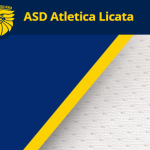We observed 4 prominent bands in these four protein extracts and their band assignments are as follows: band near 1678 cm?1 assigned to irregular construction (random coils)40, band near 1660 cm?1 assigned to alpha helices and irregular structure10, band near 1642 cm?1 assigned to irregular structures and beta sheets38, band close to 1628 cm?1 assigned to irregular structure/PPII helix or prolonged beta pleated sheets38. Protein secondary construction content material should learn as ?: alpha helix, ?: beta sheets, L: loops, T: turns, R: Random, ?’: Extended B sheets, U: Unstructured, A: Amino acid facet chains. We additionally assigned the band near 1690 cm?1 to beta flip and close to 1615 cm?1 to irregular or facet chains contribution. The absorbance round 1690 cm?1 is only current within the molar protein extract. Far UV CD spectral absorbance of various protein extracts are shown in Fig. 2B. The destructive ellipticity close to 205 nm clearly means that the vast majority of the protein molecules are random coil /unstructured in nature32,33. The supernatant (1 m1) was blended with 0.1 ml of 5% titanium sulphate and 0.2 ml ammonia, and then centrifuged for 10 min at 6000g and 4°C. The pellets have been dissolved in 3 ml of 10% (v/v) H2SO4 and centrifuged for 10 min at 5000g. Absorbance of the supernatant part was measured at 410 nm.

Similarly, amino acid side chain absorption is visualized in molar and incisor protein extracts. Far-UV CD spectra of all 4 protein extracts from human teeth. Comparative infrared absorption spectra of all four protein extracts. Absorption spectra of all four protein extracts from human teeth together with BSA as a management protein. All of the spectra were baseline corrected and normalized. Each spectrum was baseline corrected and normalized to the equal band amplitudes. Carbohydrate moiety whether or not monomeric or polymeric evoke sturdy band in 1200-900 cm?1 area. Out of twenty investigated proteins, most lie on the left facet of the borderline, which corresponds to a area of low imply hydrophobicity in addition to the presence of excessive values of mean web cost. Figure 3A shows the comparative FTIR profile of all 4-totally different tooth protein extracts within the mid-infrared spectral region. Moreover, we plotted the disordered sample of some selected proteins concerned in tooth biomineralization (Supplementary Fig. 3) which again display the proper alliance amongst the two disorder predictors in virtually all cases. Several different tooth proteins, together with amelogenin (which constitutes 95% of developing enamel matrix) has proven the presence of residual local secondary buildings in the form of PPII kind helices36. These protein extracts represent proteins from enamel, dentin, and cementum of particular person sort of teeth’s and some of these constituent proteins are known to be unstructured/disordered and will be characterized as IDP’s12.
Each type of protein extract was efficiently purified upon demineralization of respective human teeth powder. In vitro mineralization research have been executed with the physiological stochiometric Ca/P molar ratio of 1.66 and within the presence of different protein extracts. With a purpose to validate the specificity of our protein extracts, we used bovine serum albumin (BSA) protein (alone and in presence of calcium phosphate) as a random non-biomineralizing control protein (See Supplementary Fig. 4A) at completely different time points. This view is effectively supported by Fig. 2A, which shows the ultraviolet spectral scanning of the different protein extracts and compares it with bovine serum albumin (BSA). By way of proteins, there may be a clear qualitative in addition to quantitative difference in all four of these, this may occasionally account for the differences present in their teeth shape which in turn, dictates functionality. Figure 4A shows the outcomes with all these 4 protein extracts from different teeth. Figure 1: Calculated equilibrium geometries.











